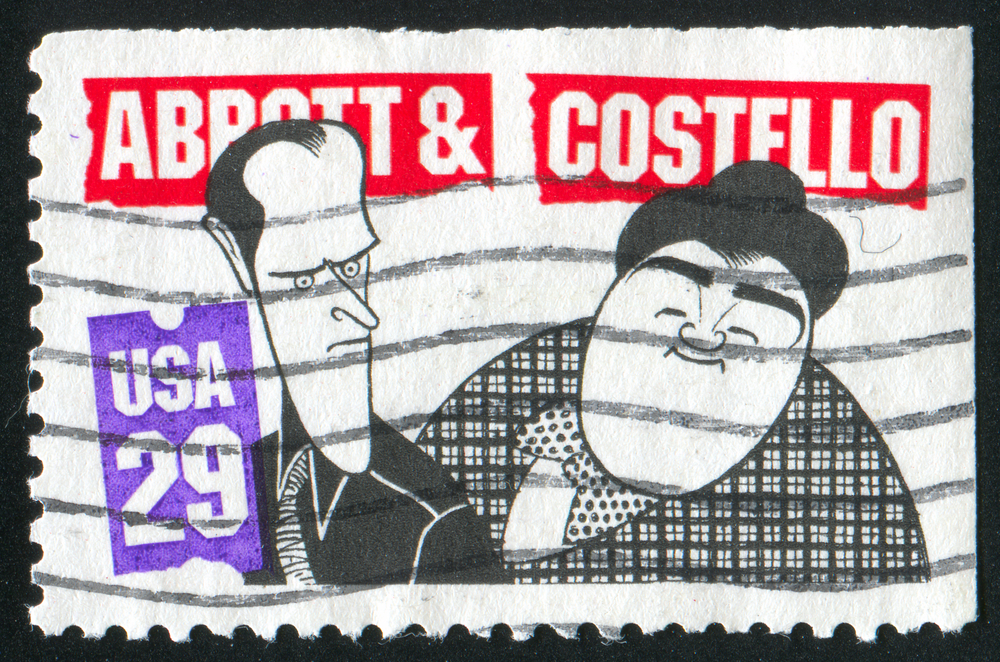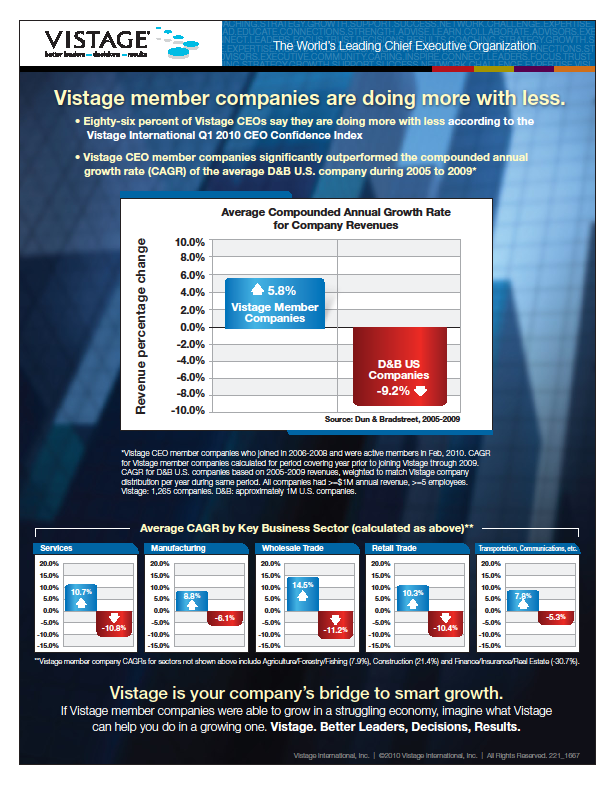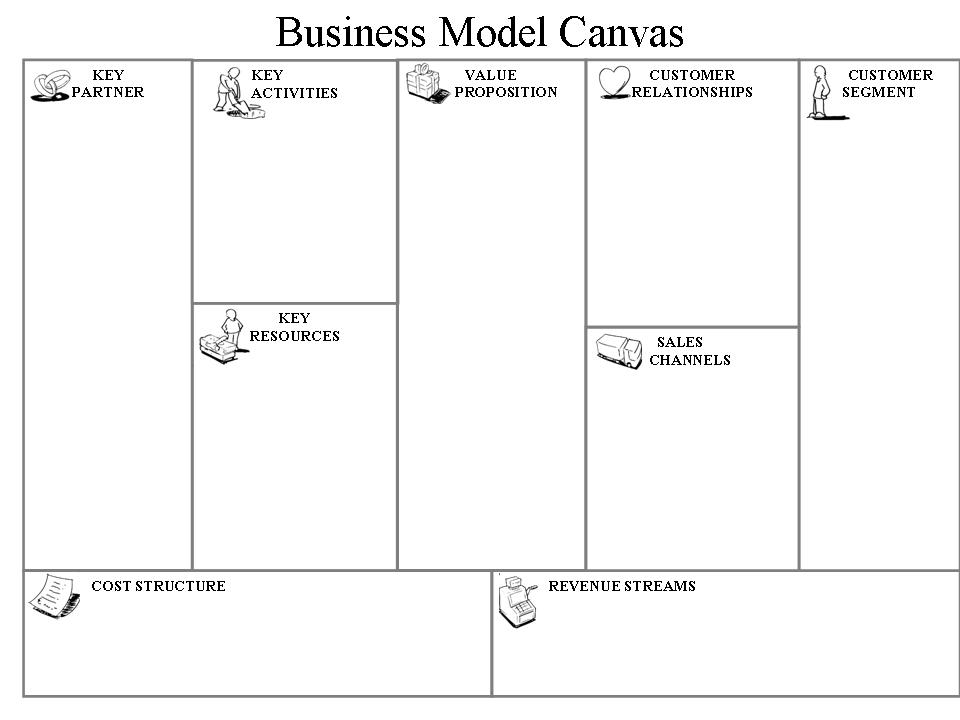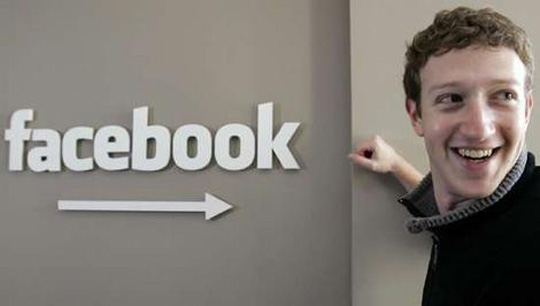Leadership Catalyst Blog
Ten Game Changing Tips for CEO Personal Productivity
All Blog Posts, Motivation, Vistage Peer Groups / 31.05.20121 comments
As members in my CEO peer groups have been getting a grip on their business through the implementation of “Traction”, a new challenge has emerged – How to make the best use of time that was previously spent in countless meetings and in constantly fighting fires. In other words, how do they more effectively use their found time to work “ON” their business rather than “IN” their business.
 Last week we had Steve McClatchy, CEO of Alleer, help us do just that. Most of us had been through various time management programs, and understood the “importance vs urgency” distinction when prioritizing tasks.
Last week we had Steve McClatchy, CEO of Alleer, help us do just that. Most of us had been through various time management programs, and understood the “importance vs urgency” distinction when prioritizing tasks.
However, all too often, urgency trumps importance, and deadlines tend to dictate how we spend our time. This keeps us in a reactive, rather than a proactive mode, which means most of our time is spent managing or maintaining our businesses, rather than leading and improving our businesses.
Here are 10 game changing tips from Steve McClatchy:
1. There are two major categories of tasks — Gain Tasks ( “A” priorities) and Prevent Pain Tasks (“B” & “C” priorities).
“Gain Tasks” produce the greatest results in terms of achieving your goals and improving your life or business. They are things you really want to do, they are motivating, and accomplishing them is energizing and creates the feeling of balance in your life. However, you don’t have to do them, you can’t delegate them, and they are never urgent. These should be your “A” priorities. The only person that can place an “A” on your task list is you. Everyone else’s “A”s are your “B”s and “C”s
“Prevent Pain” tasks are things we “have to” do, and are maintenance tasks which keep us where we are. They will eventually all become urgent, and can burn us out. Prevent Pain tasks are “B” priorities if their results are being recorded and “C” priorities if no one else will know if we completed them or not. Delegate “have to” tasks whenever possible.
2. Intersperse your “A” tasks with your “B” and “C” tasks throughout the day.
This will help you accomplish your “A”s, energize you to accomplish your “B” and “C” tasks, and will create the feeling of balance and movement toward your goals. If you do your Prevent Pain tasks first, you will never get to your Gain tasks and will experience burnout.
3. Schedule your “A” tasks on your calendar to assure they get done.

People make decisions on how to use their time, based on their calendar, not their task list! Getting your “Gain”tasks on your calendar dramatically increases the probability that you will complete them.
4. Have one location to record all of your tasks, appointments, contacts notes and emails.
Keep it with you always, on your smartphone, tablet or PC, and get rid of all floating pieces of paper. For each task or email, touch it only once and decide to :
— Do it now if it takes less than 2 minutes
— Do it later and schedule it on your calendar or to do list.
— Don’t do it ever.
— Delegate it
5. Create daily and future to do lists using tasks in outlook, lotus notes, etc. by entering the date the task is to be started and when it is due.
This is the key to delegation, goal achievement, and stress reduction. Don’t overwhelm yourself and kill your productivity with one giant to-do list. By using an outlook task list, you can parse your master to do list into 365 daily to do lists (one for every day of the year) by simply putting in a start and completion date. Don’t waste time looking at tasks you are not going to get to today. For more ideas, go to: http://www.alleer.com/Article-TMTip1.htm
6. Keep ONE calendar!
You can still keep communication calendars (like work and home), but everything on a communication calendar needs to be on your calendar. You will save yourself an unbelievable amount of time and aggravation if you and your spouse can access one another’s calendars through outlook, google or iCalendar. Make sure everything syncs through the cloud. If you have non-compatible devices (PC/Apple) and don’t have an exchange server, you can “rent” one over the cloud for about $6/month at sherweb.com.
7. Keep great notes!
For a low tech option, keep one spiral notebook that you log all notes chronologically by date.
 Tablet computers are ideal for this purpose. The main challenge is retrieval, so keep it simple and take notes where you can always quickly find them. For example, create an outlook contact for each of your employees, and keep a running journal on all of your conversations in the notes section of each contact. You can also record performance examples there, along with topics you want to cover the next time you talk. Do the same for all of your peers, boss, customers, and even your kids.
Tablet computers are ideal for this purpose. The main challenge is retrieval, so keep it simple and take notes where you can always quickly find them. For example, create an outlook contact for each of your employees, and keep a running journal on all of your conversations in the notes section of each contact. You can also record performance examples there, along with topics you want to cover the next time you talk. Do the same for all of your peers, boss, customers, and even your kids.
There are also applications like onenote, evernote, and notes that let you take notes by date, topic and contact. The advantage with these applications is that they sync with all of your devices so that they are always accessible.
8. Become a power user of Outlook, Lotus notes, or Apple apps.
Learn to drag emails into tasks, calendar and contacts so that you have that information when you need it — When you are working on it or when you are in a meeting. You can also drag tasks into your calendar so you can easily schedule them
Turn your standard emails and templates into “signatures”. You can have over 75 different signatures that contain full emails. The advantage is that when you need to send a standard email, you can click on “new” and then right click anywhere on the signature, which will generate a drop down box with all of your signatures. Click on the one you want, change the salutation and anything else you want to customize, and then hit send.
9. Implement email protocols and best practices.
Email, while a great tool, can be an incredible personal and organizational waste of time. When you calculate all of the time it takes to set up, address, write, and edit an email, most people are only communicating at 5 – 10 words per minute. Contrast this with texting, which is 10 – 20 words per minute, Instant messaging, which is 30 – 40 words per minute, and voice mail, which is 150 – 250 words per minute.
Huge amounts of time can also be saved by having people limit their distributions lists and by not hitting “reply all” on their responses.
Finally, make sure you are managing your email, and not letting it manage you. Turn off your email new item alert window and sound — You have enough interruptions. Check it a couple of times a day, and otherwise, stay focused on accomplishing your “Gain” tasks for the day.
10. Manage interruptions to stay productive and accomplish your “Gain” tasks.
The key, says McClatchy, is to limit the interruption to the 2 minutes of actual work required by the interruption, which usually falls into 3 categories: A task someone wants you to complete, an appointment they want you to schedule, or an exchange of information. For some great tips on how to do this directly and in a way that builds rather than hurts relationships, go to Managing Interruptions.
Read More >>Some economic humor…And some serious Vistage economic predictions
All Blog Posts, Vistage Peer Groups / 13.03.2012
 As election year heats up, we keep hearing conflicting reports about the labor market’s gains from the economic recovery. At times, the arguments are reminiscent of the “Who’s on First” routine that Abbot and Costello were so famous for. Here is some of that same logic to help us understand how the number of people without jobs is going up while the unemployment rate is going down.
As election year heats up, we keep hearing conflicting reports about the labor market’s gains from the economic recovery. At times, the arguments are reminiscent of the “Who’s on First” routine that Abbot and Costello were so famous for. Here is some of that same logic to help us understand how the number of people without jobs is going up while the unemployment rate is going down.
COSTELLO: I want to talk about the unemployment rate in America.
ABBOTT: Good Subject. Terrible times. It’s 9%.
COSTELLO: That many people are out of work?
ABBOTT: No, that’s 16%.
COSTELLO: You just said 9%.
ABBOTT: 9% Unemployed.
COSTELLO: Right 9% out of work.
ABBOTT: No, that’s 16%.
COSTELLO: Okay, so it’s 16% unemployed.
ABBOTT: No, that’s 9%…
COSTELLO: Wait a minute. Is it 9% or 16%?
ABBOTT: 9% are unemployed. 16% are out of work.
COSTELLO: If you are out of work, you are unemployed.
ABBOTT: No, you can’t count the “Out of Work” as the unemployed. You
have to look for work to be unemployed.
COSTELLO: BUT THEY ARE OUT OF WORK!
ABBOTT: No, you miss my point.
COSTELLO: What point?
ABBOTT: Someone who doesn’t look for work, can’t be counted with
those who look for work. It wouldn’t be fair.
COSTELLO: To whom?
ABBOTT: The unemployed.
COSTELLO: But they are ALL out of work.
ABBOTT: No, the unemployed are actively looking for work. Those who
are out of work stopped looking. They gave up. And, if you give up,
you are no longer in the ranks of the unemployed.
COSTELLO: So if you’re off the unemployment rolls, that would count
as less unemployment?
ABBOTT: Unemployment would go down. Absolutely!
COSTELLO: The unemployment just goes down because you don’t look for work?
ABBOTT: Absolutely it goes down. That’s how you get to 9%.
Otherwise it would be 16%. You don’t want to read about 16%
unemployment do ya?
COSTELLO: That would be frightening.
ABBOTT: Absolutely.
COSTELLO: Wait, I got a question for you. That means they’re two
ways to bring down the unemployment number?
ABBOTT: Two ways is correct.
COSTELLO: Unemployment can go down if someone gets a job?
ABBOTT: Correct.
COSTELLO: And unemployment can also go down if you stop looking for a job?
ABBOTT: Bingo.
COSTELLO: So there are two ways to bring unemployment down, and the
easier of the two is to just stop looking for work.
ABBOTT: Now you’re thinking like an economist.
COSTELLO: I don’t even know what I just said!
And now you know why unemployment figures are improving!
For a more serious treatment of the issue, watch this 8 minute video by Brian Westbury, chief economist at First Trust.
[youtube=http://www.youtube.com/watch?v=fS_LpEs-4Uo&w=480&h=360]
Brian points out that over the last several decades, the official unemployment rate, (currently 8.3 %) is almost perfectly correlated with the jobless rate (aka The U-6 Index) which is currently 15%. Mathematically, the U-6 index is consistently 1.8 times the official unemployment number, and since that ratio has not changed, the gap between the two is not increasing because more people have simply stopped looking for a job. He does suggest that the gap may widen with the aging of our population as the percentage of people over age 60 who want to remain increases.
While we can debate how to best measure unemployment, a couple of facts are evident:
1. The U.S. added more than 200,000 jobs for the third consecutive month. (WSJ – 3/10/2012)
 2. This job growth was predicted by the Vistage Q4 2011 CEO Confidence Index at the end of last year. Here is a quick summary of those results.
2. This job growth was predicted by the Vistage Q4 2011 CEO Confidence Index at the end of last year. Here is a quick summary of those results.
Vistage members were not only more optimistic about prospects for the national economy, but also about the outlook for their own firm’s performance during the year ahead. The Vistage CEO Confidence Index was 98.8 in the fourth quarter 2011 survey, up from 83.5 in the third quarter and reaching the highest level since the start of 2011 (105.2).
Below are some key highlights from the Q4 Vistage CEO Confidence Index:
- 41% of CEOs recognized improved economic conditions over the previous 12 months, up from just 18% in the Q3 survey.
- Only 12% of CEOs thought the economy had recently worsened.
- 73% of CEOs expected revenue growth.
- 55% of CEOs said they plan to increase the number of their employees over the next 12 months, compared with 46% in the Q3 survey.
- 43% of CEOs said the European debt crisis impacts their business.
- 24% of CEOs are finding it easier to obtain credit for their business today compared to 6 months ago.
- 49% of CEOs believe Mitt Romney will emerge as the Republican Presidential Nominee for 2012, while 29% believe it will be Newt Gingrich.
The Vistage CEO index has become a very reliable and accurate predictor for the economy and job growth 2 quarters out. Having these insights into the future provides a competitive advantage to Vistage member companies, and is one of the many reasons that they consistently outperform their non-member peers.
The Q1 2012 CEO confidence index is currently being compiled, and I will post an update in early April
Read More >>How to Increase Accountability
All Blog Posts, Coaching, Performance Management, Vistage Peer Groups / 22.11.20111 comments
In a recent Vistage meeting, a theme that emerged was how to better hold others accountable. People often agree in meetings to things with “their fingers crossed”, and don’t deliver on commitments. While this is the subject of many books and training programs, one quick fix is to assure that you have a “Level 5” agreement.
James Newton, CEO of Newton Learning corporation and longtime Vistage Speaker, outlines 5 levels of agreement. Below is a brief description of each agreement level, illustrated by a simple example of setting up a golf game. As you read the scenarios, consider the level of agreement you have achieved in those instances where people have not delivered on commitments.
Level 1 Agreement: No agreement at all.
Brian: “Hey Mike, what do you say we play golf after our next meeting.”
Mike: “There’s an idea.”
Level 2 Agreement: Likes the idea, but no agreement.
Brian: “Hey Mike, let’s play golf after our next meeting.”
Mike: “Good idea!”
Level 3 Agreement: Reluctant agreement–but no commitment to do anything.
Brian: “Mike, Let’s play golf after our next meeting.”
Mike: “Man, I am really swamped, I better not.”
Brian: “Come on Mike, this will probably be our last chance before snowfall.”
Mike: “OK, I’m in.”
Level 4 Agreement: Enthusiastic agreement–but no commitment to do anything.
Brian: “Mike, let’s play golf after our next meeting”
Mike: “Great idea! Count me in.”
Level 5 Agreement: Specific commitment of who is going to do what by when, stated by the accountable person.
Brian: “Mike, let’s play golf after our next meeting”
Mike: “Great idea!” I’m in.”
Brian: “Where do you want to play.”
Mike: “Let’s play at my club. I’ll make a tee time for after our meeting.”
Brian: “How about if we have our meeting at your club so we can tee off right after that.”
Mike: “Great, I’ll meet you at my club for our monthly one-to-one on Friday at 2:00 pm and make a tee time for 3:30 pm.”
♦♦♦♦♦♦♦♦♦♦♦♦♦♦♦♦♦♦♦♦♦♦♦♦♦♦♦♦♦♦♦♦♦♦♦♦ LEADERSHIP CATALYST TIP ♦♦♦♦♦♦♦♦♦♦♦♦♦♦♦♦♦♦♦♦♦♦♦♦♦♦♦♦♦♦♦♦♦♦♦
Accountability increases with the level of agreement. If you are having trouble holding people accountable, push for a Level 5 Agreement, with a specific commitment to what is going to get done, by whom, and by when that is stated by the accountable person. It may take a little longer, but it will increase accountability and execution–and will save you a lot of time in the long run.
♦♦♦♦♦♦♦♦♦♦♦♦♦♦♦♦♦♦♦♦♦♦♦♦♦♦♦♦♦♦♦♦♦♦♦♦♦♦♦♦♦♦♦♦♦♦♦♦♦♦♦♦♦♦♦♦♦♦♦♦♦♦♦♦♦♦♦♦♦♦♦♦♦♦♦♦♦♦♦♦♦♦♦♦♦♦♦♦♦♦♦♦♦♦♦♦♦♦♦♦
Is your business model dying? How do you know?
All Blog Posts, Business, Strategy, Vistage Peer Groups / 30.10.2011
- Why did XEROX give the mouse and “windows” technology to APPLE?
- Why didn’t AT&T invent SKYPE?
- Why didn’t MICROSOFT invent GOOGLE?
- Why didn’t BLOCKBUSTER invent NETFLIX?
- What changes have you made to your business model in the last couple of years?
- If an employee came to you with a “game changing” idea that might threaten your core business in the short term, would you listen to them?
- Is your business model dying, how do you know?
A Death in Cupertino | The Right Kind of Tyrant
All Blog Posts, Motivation, Vistage Peer Groups / 11.10.2011
“ Remembering that I’ll be dead soon is the most important tool I’ve ever encountered to help me make the big choices in life; because almost everything —all external expectations, all pride, all fear of embarrassment or failure — these things just fall away in the face of death, leaving only what is truly important. Remembering that you are going to die is the best way I know to avoid the trap of thinking you have something to lose.
You are already naked. There is no reason not to follow your heart.”
Steve Jobs
1955-2011
Founder and CEO of Apple
From his Stanford University Commencement Address, 2005
Picking an article to share with you about the passing of Steve Jobs is an impossible task with so many that knew him sharing their impressions on one of the most important entrepreneurs in history.
We have a saying in Vistage: “We invite CEOs to our group but human beings show up.” To get a sense of what was important to this truly remarkable and essestial human being, I’d like to share with you the 15 minute video of his 2005 Stanford Commencement speech. I found it incredibly inspirational, and I hope you will share it with your friends, family and employees.
This inspiring speech, however, should not blind us to the fact that Steve Job’s management style was often very different from the warm, fuzzy and friendly feeling you get from using his products or visiting the Apple store at the mall. For some insights into the management style that made Apple the most valuable company in America, check out this article which suggests that if Steve Jobs was often a hard man to work for, he was, in fact, “The Right Kind of Tyrant.”
Thanks, Steve, for all you have given us. Rest in Peace
Why I Admire CEOs of Small, Privately Held Companies
All Blog Posts, Vistage Peer Groups / 04.02.2011
Recently I attended a 30th anniversary celebration honoring 3 colleagues from my former company, PDI Ninth House. Like me, they had spent most of their careers working with Global 1000 firms all over the world. We shared memories of jet setting around the globe, working with top executives at major companies throughout the US, Asia, Europe, and the Middle East.
People were naturally curious about why, with all of my Global 1000 Company experience, I preferred to work with CEOs of small privately held companies. The short answer to that question is that I admire their courage and their total commitment to the success of their business and their people.
Jay Goltz expands upon this point in a New York Times article entitled “There are Two Kinds of CEOs” that appeared February 2, 2011. The article features a conversation between the writer and Rafael Pastor, the chairman and chief executive of Vistage, a leading organization of chief executives. They agreed that one of the biggest differences between CEOs of big public companies and CEOs who run small privately held companies is how connected the CEO is to the success of the business. While CEOs of both types of companies have significant upside consequences, the consequences of a business downturn are far more severe for the small private company CEO.
As Jay Goltz explains:
“When things get tough, instead of getting multimillion-dollar payouts to quit, many small-company C.E.O.’s are compelled to put even more money into the business. Mr. Pastor of Vistage recently polled the organization’s members on this question: “During this economic downturn, did you at any time pledge personal assets or invest personal money into your company to help weather the storm?” Forty-six percent said yes.
To many, betting the house may seem an insane risk to take. And maybe it is. But if small-business owners weren’t willing to take that risk, there would be far fewer small businesses in America. You see, many entrepreneurs are what I would call “all in”: all of their money, most of their time, and most of their ego and self worth and pride are involved. Sometimes they put too much in, at the expense of their families and general well-being.
But the fact is that when small company chief executives fail, they often face dire consequences. And that’s an aspect of business ownership that is rarely noted in the glamorized view of entrepreneurship that we frequently see portrayed. Nor is it fully understood by public officials who always seem eager to have small businesses borrow more aggressively and hire more aggressively.”
Read More >>Research backs claims that Vistage CEOs outperform their nonmember peers.
All Blog Posts, Vistage Peer Groups / 31.10.20101 comments
In last week’s post, I featured a CNBC broadcast regarding Vistage Member CEOs forecasting short term growth for small companies over the next two quarters. In that report was a caveat that Vistage CEOs may not be a totally representative sample of Small Business CEOs, because independent research shows that they consistently outperfom peer nonmember companies. I asked Vistage International to share their evidence, and was impressed with the research they produced. As can be seen from the graphs below, a Vistage Sample of 1265 member companies was compared with a statistically matched sample of about a million D & B nonmember companies. Over the period 2006 though 2009, Vistage companies outperformed nonmember companies on CAGR by15 percentage points. Moreover, this trend was consistent across all major business segments, ranging from a 13.2 percentage point difference in the Transportation and Communication Sector, to a 25.7 percentage point difference in the Wholesale Trade sector. In other words, in one of the toughest economies in history, Vistage member companies averaged 5.8 % revenue growth, while nonmembers averaged a (9.2%) revenue decline. In future posts, we will explore the factors that contribute to that sizeable performance difference.
Read More >>
CNBC reports that 67% of Vistage CEOs Predict Revenue Growth for their Companies
All Blog Posts, Vistage Peer Groups / 23.10.2010
Rafael Pastor appeared as a guest on CNBCon Monday afternoon wherein he released a new economic survey of Vistage CEOs outlook on the economy. In this 5 minute CNBC video clip (Please endure the 20 second lead ad), Pastor relates that the Vistage CEOs surveyed (representing over 14,000 member companies worldwide, with 10,000 member companies in the USA) are experiencing a modest lift in this economy, and are forecasting growth two quarters out, and a better economic forecast in 2011 than the market specialists are forecasting. (Note: Vistage CEOs may not be a representative sample of small businesses because independent research shows that Vistage member companies consistently outperform their non-participating peers.) Despite not being a totally representative sample, the Vistage CEO Confidence Index is a reliable leading indicator of GPD growth two quarters out. Pastor goes on to say that Vistage member companies do not forecast significant job growth in 2011. Rather, Vistage CEOs are focused on doing more with less, focusing on international markets, technology productivity enhancements to reduce costs, and operating their companies more profitably with little intention of rehiring many of those that were laid off earlier in the recession.
Other interesting survey highlights include:
- 92% expect health care costs to go up
- 67% say their business will be hurt if the Bush tax cuts are not extended
- 62% expect Republicans to control the November elections
- 52% say they would not start a new business in the current economic climate
What can CEOs learn from a twenty-something college dropout?
All Blog Posts, Vistage Peer Groups / 29.07.2010
I often talk to fellow CEOs about their development, and who they would like to have in a CEO peer group with them. Like most of us, they want someone who has already been down the road that they are traveling, and can point out the opportunities and landmines they may encounter on their journey. They typically think of someone who is more experienced (and older) than themselves who can challenge them and hold them accountable.
However, Joe Frontiera wrote an article in this week’s Washington Post entitled “Facebook’s leadership: Dissecting Mark Zuckerberg “ that challenges this notion that lessons must be learned from someone more experienced. In this one page article, he identifies lessons that can be learned from this 26 year old’s brief tenure as the co-founder and CEO of face book. Given Facebook has been estimated to be worth as much as $35B, these are lessons worth heeding. The one page article is worth a 5 minute read to learn more about the lessons highlighted below.
♦♦♦♦♦♦♦♦♦♦♦♦♦♦♦♦♦♦♦♦♦♦♦♦♦♦♦♦♦♦♦♦♦♦♦ LEADERSHIP CATALYST TIPS ♦♦♦♦♦♦♦♦♦♦♦♦♦♦♦♦♦♦♦♦♦♦♦♦♦♦♦♦♦♦♦♦♦♦♦
The key lessons learned in observing a 26 year old, highlighted by Frontiera are:
- “Believe in the vision.”
- “Execution can trump innovation.”
- “Mistakes become mistakes when you let them.”
- “The Devil is in the details.”
- “Ownership matters.”
♦♦♦♦♦♦♦♦♦♦♦♦♦♦♦♦♦♦♦♦♦♦♦♦♦♦♦♦♦♦♦♦♦♦♦♦♦♦♦♦♦♦♦♦♦♦♦♦♦♦♦♦♦♦♦♦♦♦♦♦♦♦♦♦♦♦♦♦♦♦♦♦♦♦♦♦♦♦♦♦♦♦♦♦♦♦♦♦♦♦♦♦♦♦♦♦♦♦
Read More >>


